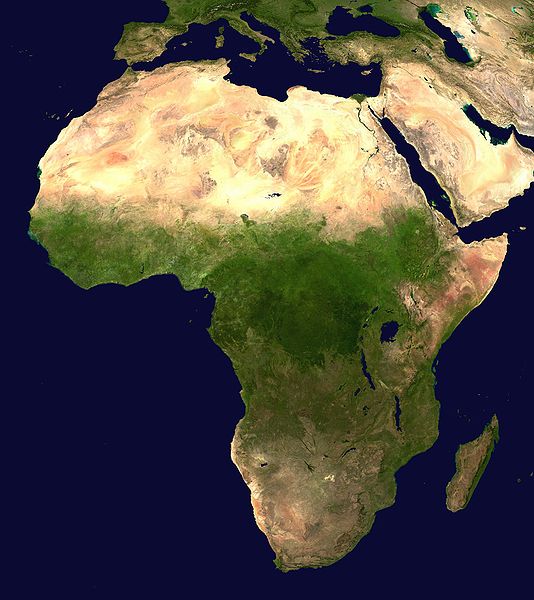ASP Fellow Joshua Foust wrote for PBS Need to Know about the French military intervention in Mali.
Over the weekend France launched an assault on northern Mali, part of an operation to unseat the extremists who have occupied half the country since last year’s coup. Immediately afterward, al Qaeda-linked rebels launched a counteroffensive, raising the specter of a drawn-out war.
While the conflict is in its early stages, the Mali intervention is a milestone moment for the U.S. The whole of Africa is of growing importance to policymakers, particularly to America’s strategic interests in West Africa. The next few weeks will be critical. If France is able to dislodge the various rebel factions from the northern cities and the Malian-ECOWAS forces can successfully reclaim territory, it will be a stunning success for counter-terrorism efforts in the region.
Nonetheless, if France fails to dislodge the militias, the conflict could grind out over a protracted period of time – driving up costs and casualties beyond what the French government is willing to withstand. Should other countries such as Algeria or the U.S. assist the French intervention, some cost considerations could be defrayed. In the absence of any political deal, though, it’s difficult to say how this conflict will ultimately play out.
Here are five things you need to know about the conflict:
Islamists in Mali have been a long-standing concern
Both France and the United States have grown concerned about the growth of al Qaeda-linked extremist groups in North and West Africa over the last decade. Last March, when a disaffected group of soldiers launched a coup d’état to unseat the democratic government, security in northern Mali collapsed. A mélange of armed groups moved into the vacuum of authority, spearheaded by four disparate groups: the Tuareg Malian National Movement for the Liberation of Azawad (MNLA), al Qaeda in the Islamic Maghreb (AQIM), the Movement for Tawhid and Jihad in West Africa (MUJAO), and Ansar al-Din.
I asked Andrew Lebovich, a Dakar-based analyst what these organizations were fighting for but he told me, “there is little certainty about what the Islamist groups actually want.” While each group has said their aim is the imposition of shari’ah (the code of law derived from the Koran), Ansar al-Dine position vis a vis control of Mali has vacillated and the MUJAO has openly expressed the desire to spread jihad across West Africa.
Conditions in northern Mali have gotten incredibly bad.
Over the last nine months, as the international community debated how to respond to the Islamists’ rapid advance, conditions in the area have become dire. Residents have experienced food shortages, abductions, summary killings, and rape. Additionally, Amnesty International has documented amputations and a worrying use of child soldiers.
According to Refugees International, the conflict in the north resulted in a surge of internally displaced persons southward. Unfortunately, the UN has been slow to respond, they report, and the huge influx of people has pushed communities beyond their ability to cope. Food insecurity and malnutrition has already been a bigger problems in Mali’s south than in its north and internal refugees have sometimes left their families for “alternative shelter arrangements.” This, RI reports, has led to a massive humanitarian crisis in the past.
Security in Mali represents a critical challenge for counter-terrorism efforts
There was widespread hope that the Economic Community of West African States (ECOWAS) would be able to restore order. But a surprise assault southward by Ansar al-Dine pushed the French into action.
France’s weekend offensive “demonstrates the failure of the regional security system,” Stéphane Taillat, a researcher at the French Military Academy of St. Cyr, told me. Ansar al-Dine launched an offensive southward, he said, to destroy the Malian army and disrupt that training mission.
Intervention enjoys broad, if cautious support
France has multilateral support for intervention. “We have never ruled out the use of force to eliminate the terrorist threat in the Sahel region,” one Algerian official told reporters. By violating the fragile ceasefire and joining forces with AQIM and MUJAO, the official said, “The leaders of Ansar Dine gave formal proof that they did not disassociate from terrorist groups as they repeatedly told us.”
The U.S. is participating, too, though in limited fashion. AFRICOM has spearheaded a network of small airbases throughout the region from which to launch drones. The Washington Post noted the presence of an airbase in neighboring Burkina Faso that’s already used for flying PC-12 surveillance planes over the region. Some rebel groups have tried to shoot down these flights, which might prompt the U.S. to shift to unmanned drones. So far none of these aircraft have weapons but weaponizing could happen on a moment’s notice.
Expectations are low
Taillat explains that the French have limited, political goals in mind, “Expectations are mainly focused on the capability to strengthen Malian government and armed forces,” he told me. The plan is to achieve a certain level of stability to allow ECOWAS, the local regional alliance, to take over stability operations.
Even such limited goals are not easy. For one, the time frame France has calculated may be too short. Foreign Minister Laurent Fabius told reporters over the weekend that operations were only planned “for a matter of weeks.” It’s unclear what they can accomplish in such a short period of time. France is clearly trying to draw on its experiences in Afghanistan – where some painful lessons were taught about limiting expectations. It remains to be seen if their current approach will bear fruit.


